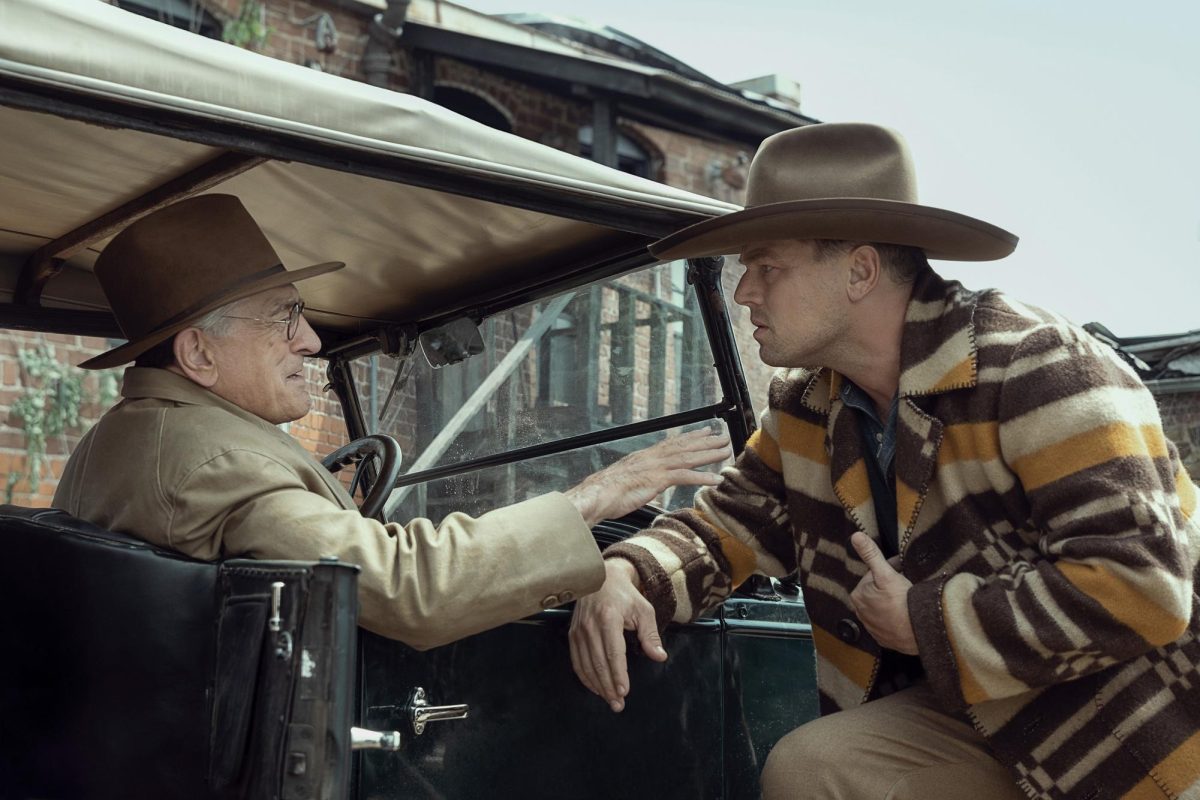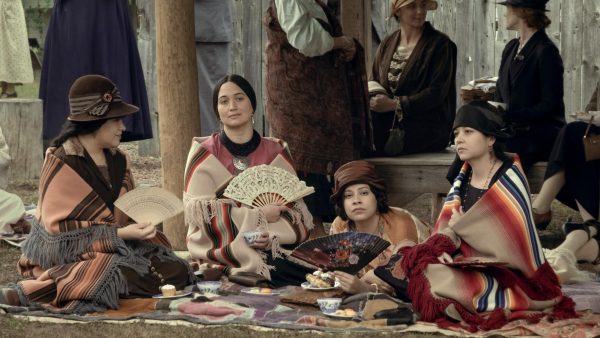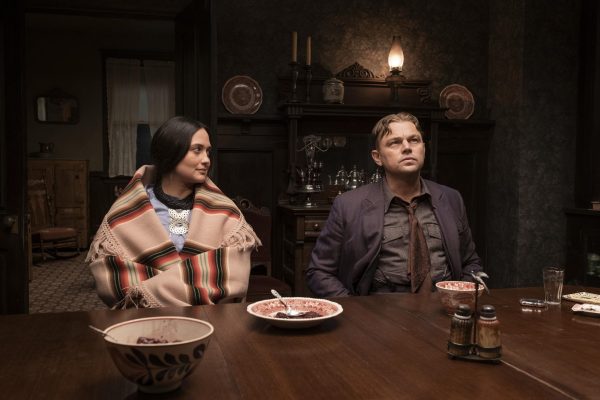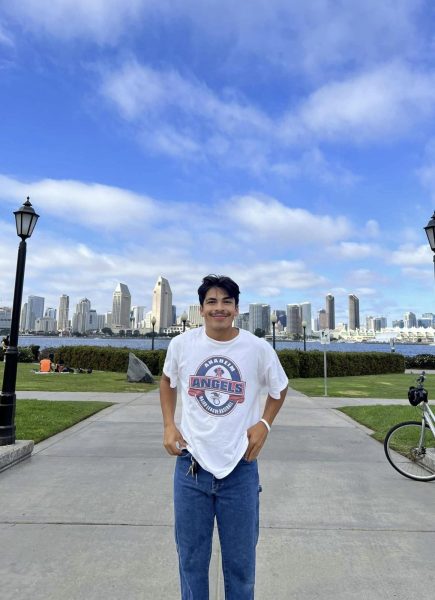In Martin Scorsese’s “Killers of the Flower Moon,” the wolves are not hidden at all. These wolves are not the creatures of legend, but rather human beings who operate with ruthless malice in plain sight. Scorsese’s masterful historical drama, adapted from David Grann’s non-fiction book of the same name, unveils a chilling narrative of murder and greed so blatant that it sends shivers down the spine. This is a story where murder is ordered as casually as a drink at the bar, revealing a sinister underbelly of society.
The story takes place around the turn of the century, when the Osage Nation, who had been pushed off their land and into the imagined wasteland of Oklahoma, discovers oil on their newfound territory. This finding suddenly made them the wealthiest group of people in the country per capita, attracting the greed of those who had laid claim to property that wasn’t theirs. The struggle for control of this newfound wealth elevated William King Hale, played with unrivaled skill by Robert De Niro, to legendary status. Hale, a cattle magnate, played political games with both the Osage and white settlers while secretly enriching himself. De Niro’s portrayal conveys the spirit of a sociopath capable of murder.
Ernest Burkhardt (Leonardo DiCaprio) is at the center of this upheaval after returning home from the war and finding himself under Hale’s manipulative sway. He begins as a driver for the rich Osage and meets Mollie Burkhardt (Lily Gladstone), whom he marries just before a series of murders upset the Osage community. Mollie’s sister, Anna (Cara Jade Myers), and other Osage members are murdered one after the other, creating a dark shadow of suspicion and fear. “Killers of the Flower Moon” builds a complicated narrative around Ernest, Mollie, and Hale, diving into the deep web of their relationships.
While “Killers of the Flower Moon” is not a classic gangster film, it resonates with Scorsese’s ongoing examination of corrupt and violent characters. The film has a strong feeling of time, using the story to reflect on the status of society a century later. It investigates how violence and injustice have infiltrated the nation’s soil, and shows the deep injustices that have defined American history. The Tulsa Massacre and the KKK are indirectly referenced throughout the film, highlighting the greater theme of tyranny and the ease with which certain individuals control those they feel inferior.
Scorsese’s vision would be incomplete without the great partners who help bring this epic drama to life. The cinematography of Rodrigo Prieto portrays the vast Osage Nation area while also swooping in for striking close-ups. Robbie Robertson’s score adds complexity and suspense to the film, imbuing it with a heartbeat that matches its lengthy running duration. The superb editing of Thelma Schoonmaker keeps the story on track, allowing it to fluidly travel through a complex narrative.
The on-screen reunion of Scorsese’s two idols, De Niro and DiCaprio, is a tremendous spectacle as they fuel one other’s performances in a tale of abuse and deception. However, Lily Gladstone’s portrayal of Mollie steals the show. Her flawless performance, free of hyperbole, captures the character’s honesty and humanity rather than reducing her to a simple symbol of Indigenous pain. Mollie’s account may not have been written with the intention of establishing the FBI or shedding light on injustice a century later. She, like many others, was just trying to live and love.
The entire cast follows suit, immersing themselves in the realities of their characters and creating a riveting story. “Killers of the Flower Moon” is a creative mosaic that comes together to reveal the wolves hidden in plain sight, resulting in a stunning and unique cinematic experience.




